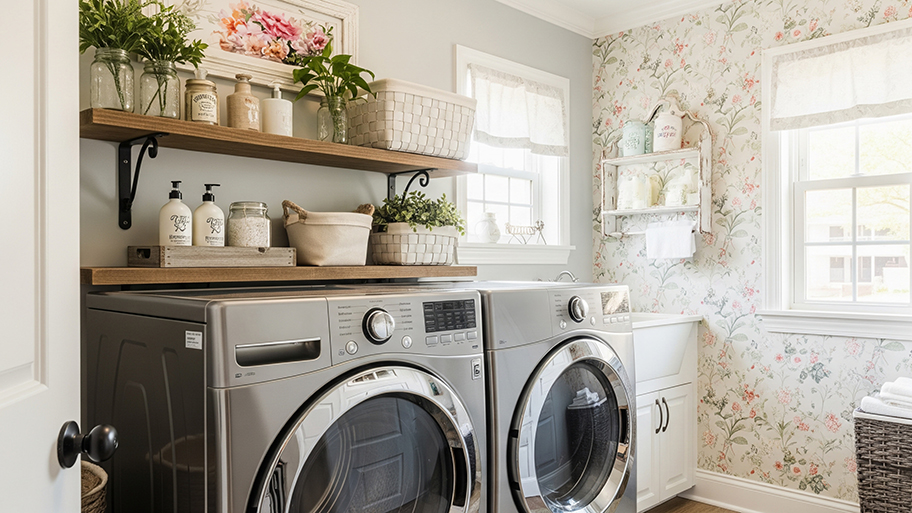
Looking to keep warm this winter without the high utility bills? Use this pellet stove installation cost guide to see what a natural heating solution will cost.
Appliance repair costs depend on your project and location. Check with a local pro for your specific job.
Installing a built-in oven costs between $800 and $3,200, but costs vary by several factors. Find out how much it costs to install a built-in oven based on variables like oven type and whether you hire a pro to do the job. Built-in ovens, also known as wall ovens, are installed directly into kitchen walls, sitting flush with the cabinets or wall. They offer a sleek, streamlined look to elevate your kitchen design without infringing on your square footage.
The type of oven you choose is among the biggest factors impacting cost. Most built-in ovens are electric because it's easier to install the 240-volt outlet needed to run an electric oven than it is to run a gas line through a wall encasement. But if you have your heart set on a gas oven, installing one into the wall is still possible. You can also choose between convection vs. conventional ovens.
| Oven Type | Cost |
|---|---|
| Gas Oven | $600–$1,500 |
| Electric Oven | $600–$3,500 |
| Convection Oven | $820–$3,300 |
| Pizza Oven | $1,400–$5,000 |
| Steam Oven | $2,000–$4,000 |

If you hire a local appliance installation pro to install a built-in oven, you can expect to pay around $90 per hour in labor costs. How long your installation will take depends on the complexity of the project. For instance, if you're simply replacing an old built-in oven with a new one of the same size, then installation should take no longer than an hour. However, installation can take a day or more to complete if you need any construction updates, a new outlet, or a new gas line.
When building a budget for a built-in oven installation, remember to account for oven features and construction updates to ensure the new oven fits seamlessly into your space.

Some built-in ovens require construction updates during the installation. For instance, if you don't already have a designated cutout in your wall, counters, or cabinets for a built-in oven, then you should factor in the cost of making those cuts.
Additionally, some homeowners want a cabinet door covering their built-in oven to help it blend in with the rest of the cabinets. Depending on the project's complexity, the cost of construction updates for a built-in oven ranges from $1,000 to $5,000.
Electric ovens typically require a 240-volt outlet, so if you don't have one, you'll need to pay to install one. Installing an electrical outlet costs around $140 to $300, including labor costs. Similarly, gas ovens require a gas line to work. The cost to install a gas oven line is about $20 per linear foot.
Generally, the bigger your oven, the more you can expect to pay. This is especially true for built-in ovens, which require more outlets, gas lines, and custom cabinetry to fit. It’s important to understand your wall oven size as this can play a big role in labor costs. Additionally, if you decide to install multiple built-in ovens (for those ambitious Thanksgiving dinners), expect the cost to go up as well.
You can save money by installing a built-in oven yourself since you'll only need to pay for the cost of the oven. However, some built-in oven installations are much more intensive than others. Some built-in oven installations require cutting into cabinets, counters, and drywall. An installation might also require running a new gas line or installing a new electrical outlet. In these cases, we recommend hiring a local contractor for more complex installs unless you have related experience under your belt.
When hiring a contractor to install a wall oven—or any kitchen appliance for that matter—don’t go with the first professional you find online or in the phone book. We recommend getting quotes from multiple contractors (at least three) so you can compare them based on their price, timeline, qualifications, customer reviews, and other factors that are important to you.
During the quote process, you can ask the appliance installers several questions to help determine if they’re a good fit for your wall oven installation, including:
Are you licensed and insured to do this kind of work? If you are not the person who will actually be installing the built-in oven, can you confirm that the person who will be is also licensed and insured?
If any gas plumbing or electrical work is required for this installation, are you qualified to do that, or will you subcontract that work out? If you are subcontracting out part of the work, can I review and choose the contractors you’ll be using?
Have you installed this kind of appliance before? Can you recommend the type and size of oven that is most appropriate for my kitchen?
Are there other kitchen renovations that make sense to do at the same time, whether to help make the kitchen more efficient or simply because we’ll need to move other appliances or cabinets as part of this installation?
How soon can you begin this work, and how long will the installation take?
Do you have examples, including photos, of other recent oven wall installations your company has done? Do you have any recent client testimonials I can review?
Wondering how your oven stacks up against other Angi customers? According to Angi data, nearly 51% of customers cite having an electric oven, while almost 47% report having a gas oven.
Home is the most important place on earth, which is why Angi has helped more than 150 million homeowners transform their houses into homes they adore. To help homeowners with their next project, Angi provides readers with the most accurate cost data and upholds strict editorial standards. We extensively research project costs to develop the pricing data you see, so you can make the best decisions for you and your home. We rely on reputable sources, including the U.S. Bureau of Labor Statistics, academic journals, market studies, and interviews with industry experts—all to ensure our prices reflect real-world projects.
Want to help us improve our cost data? Send us a recent project quote to [email protected]. Quotes and personal information will not be shared publicly.
From average costs to expert advice, get all the answers you need to get your job done.

Looking to keep warm this winter without the high utility bills? Use this pellet stove installation cost guide to see what a natural heating solution will cost.

Discover the average washing machine repair cost, key price factors, and expert tips to help you budget and save on repairs for your home.

The cost to relocate washer and dryer hookups varies based on location, as well as whether your moving the appliances and adding new hookups. We’ve compiled a full price breakdown here.

Calibrating your oven is usually a simple task you can do in less than an hour. Read here to learn how, no matter what type of oven you have.

Not sure if you should repair or replace your cooktop? Our guide helps you make the right decision for your appliance.

Did you leave the gas on? If you went out and forgot to turn off the stove, don’t panic. Instead, remain calm and follow a few basic steps.